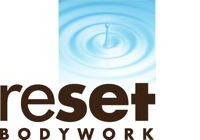Download a free eBook here! A Practical Guide to Rolfing SI – by Owen Marcus
Rolfing Structural Integration is an amazingly therapeutic form of bodywork developed by Dr. Ida Rolf more than 50 years ago. In Rolfing, we work with the body’s connective tissue to achieve balance and align the segments of the body in gravity. The connective tissue is called fascia and can be thought of as a web-work that interweaves throughout the body. Rolfers™ work to promote span, balance and ease of movement between the layers of fascia by applying techniques of manual pressure combined with client movement.
In 1920, Ida Pauline Rolf received her Ph.D. in biochemistry from the College of Physicians and Surgeons of Columbia University. Dr. Rolf’s interest in alternative healing lead her to explore homeopathy, osteopathy, chiropractic and yoga. The notion that proper alignment, physiologic function and anatomical structure are related is the basis of many of these healing methods.
Dr. Rolf began developing her system to help the chronically disabled who had been unable to find help elsewhere. Her main goal was of organizing the human bodily structure in relation to gravity. This method was originally called Postural Release and later Structural Integration, also commonly known as Rolfing.
Rolfing Structural Integration is a holistic therapy that aims to reorganize the tissue and structure of the body over a course of ten sessions. Dr. Rolf speaks of her ten series model:
“In Structural Integration, we expect to give a cycle of 10 sessions. There is a reason for this. We are not dealing with local problems. We are not dealing with the kind of thing that you can say, ‘Well, I fixed that, that’s all.’ We are dealing with an intent to make a body more secure, more adequate within the field of gravity. This requires that muscles be balanced, and need to be balanced around a vertical line. And when I talk about balancing muscles, I’m talking about balancing the right side against the left side. About balancing the front of the body against the back of the body and, finally, about balancing the innermost muscles against the outermost, the inside against the outside, this is the most important of these balances, and we start from the outside working in, and it takes ten hours before we can get to the place where we can really balance the outside against the inside.”
–Ida P. Rolf, Ph.D.
